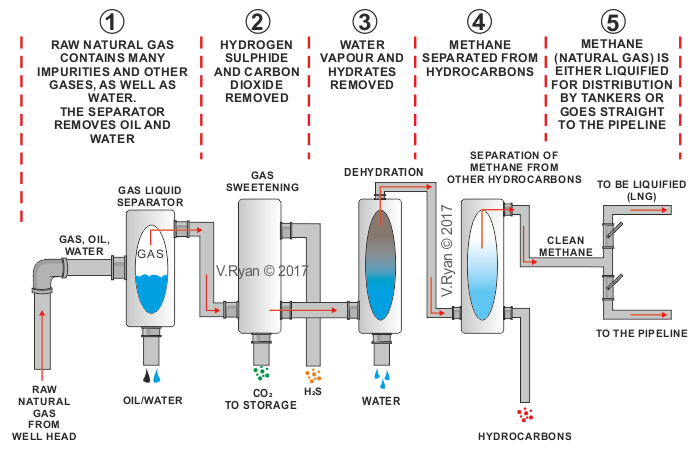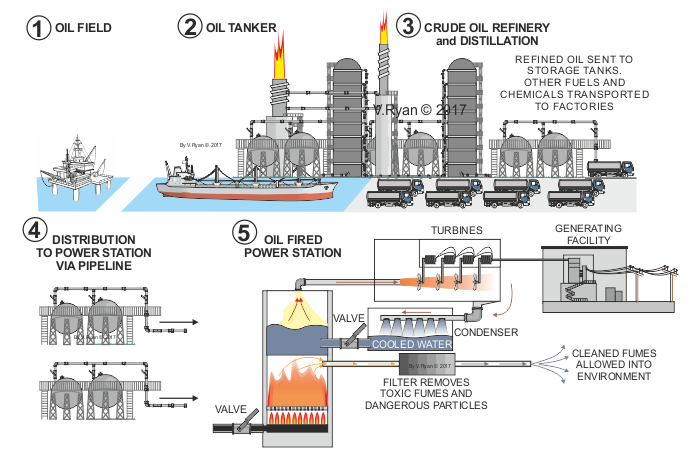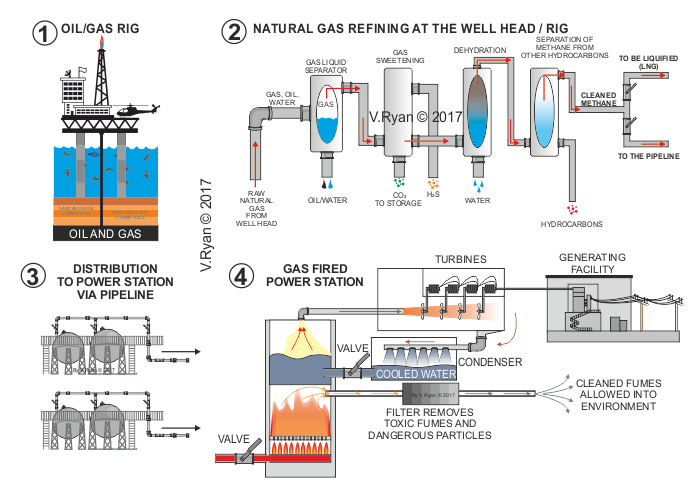Oil and natural gas are often found under the sea, deep below the sea bed. This can be seen in the North Sea Oil Fields.
In this inhospitable environment, extracting oil and gas is more difficult, as an oil rig that can be anchored to the sea bed, is required. Rigs like this are very large and technically advanced structures, costing millions of pounds.
After years / decades of use, the oil and gas eventually runs out or becomes too expensive to extract. When this happens, the oil rig has to be dismantled (decommissioned), to avoid environmental damage and for scrap metal value.
Generally, when an oil / gas well is drilled, the pressure of the oil trapped in the rock structure (reservoir), is enough to drive it to the well head. As the oil / gas becomes depleted, the natural pressure decreases, making it necessary to artificially increase pressure. This is achieved by injecting water, carbon dioxide and air into the remaining oil reservoir. This has the effect of driving the crude oil to the well head.
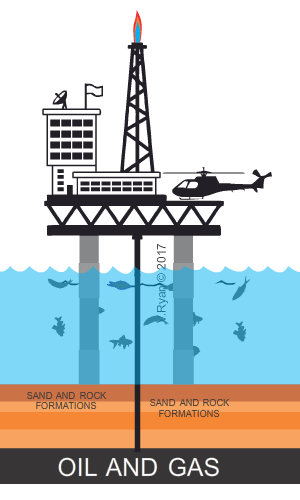
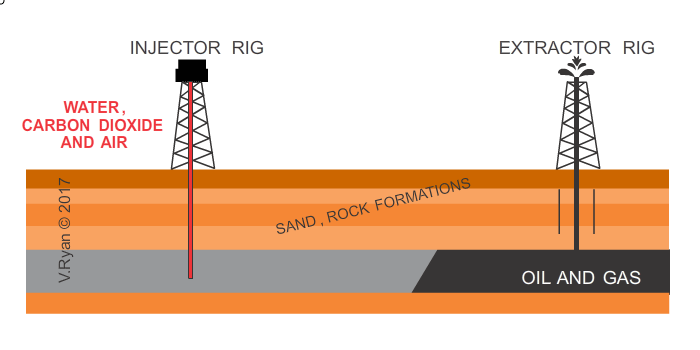
Crude oil needs more refining than natural gas. It is distilled to produce a range of fuels, liquids and chemicals.
